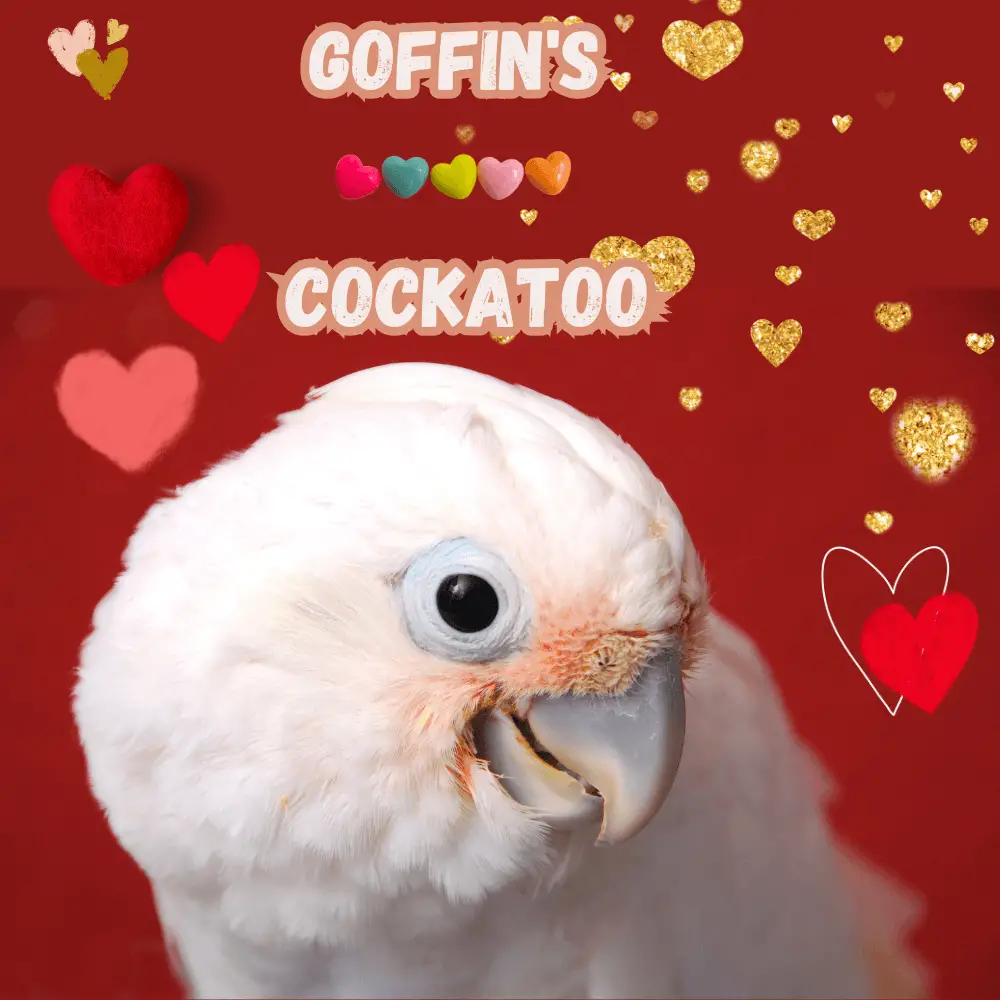Goffin’s Cockatoo: ( Cacatua goffiniana), like all members of cockatoo, is a crested species, meaning it has a collection of feathers on its head that can move up or down at will; its body is covered in white feathers with feathers or salmon pink between peak and eyes.
The deepest parts of the Crest and neck feathers are also pink, but the color is hidden by the white color of the most superficial. The bottom of his wings
and the tail feathers have a yellowish tint.
The bill is pale gray and the eyes range from brown to black. There is a clear sexual dimorphism Yes, often merge with the corella cockatoo (Cacatua sanguinea) due to their similar appearance.
- Order : Psittaciformes
- Family: Cacatuidae
- Genus: Cockatoo
- Scientific name : Cacatua goffiniana
- Quote : Roselaar, CS & Michaels, 2004
- Protonimo : Cacatua goffiniana
Where do cockatoos live
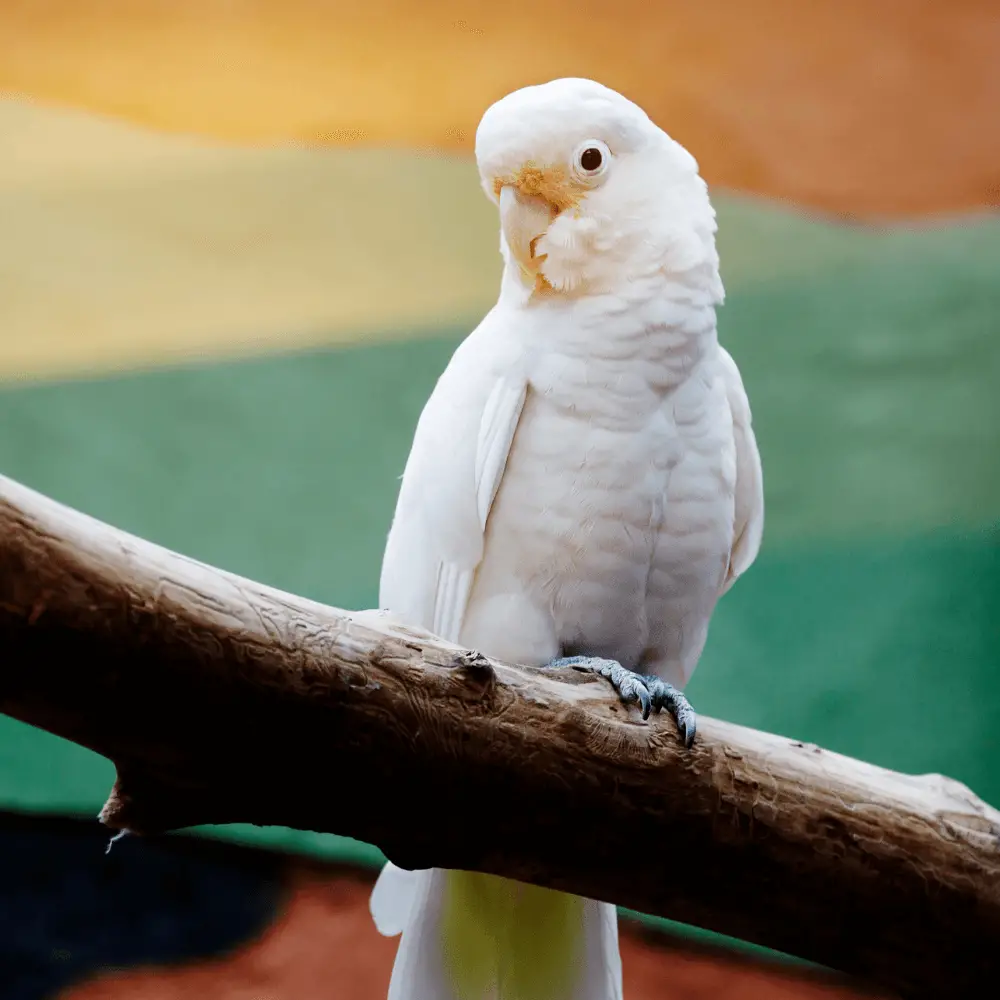
Riparian forests, groves of acacia and eucalyptus with short grass or pastures with scattered groups of trees.
Reproduction
The start is two to three eggs, usually laid in the hollow of a tree. The incubation, which is shared by two birds, lasts a little 30 days. The baby leaves its nest about ten weeks after hatching, and feeding by the parents continues for another few weeks.
What do cockatoos eat
Dried fruits, fruits, berries, flowers, field, bulbs, egg yolks, sprouts, and insects
Distribution
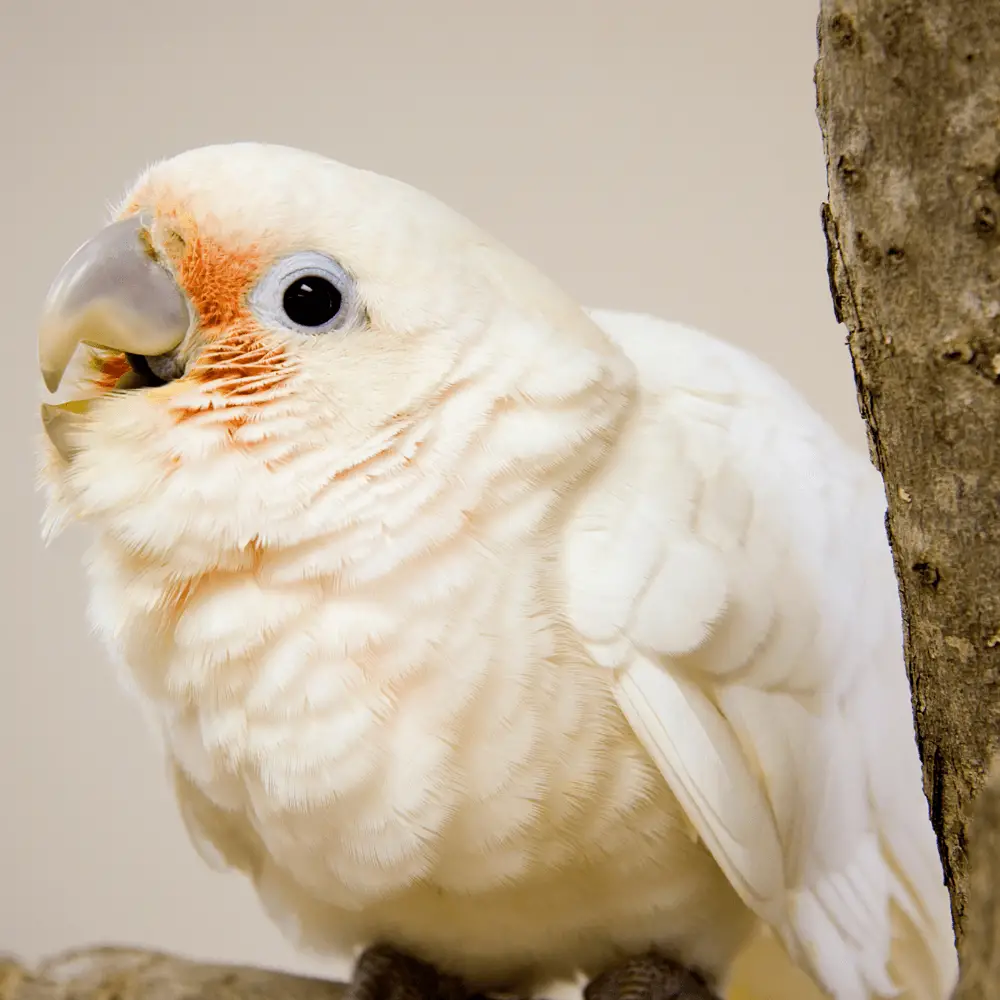
The Goffin’s Cockatoo is a species of cockatoo endemic to the forests of Yamdena, Larat Yes Selaru, and all the islands of the Tanimbar Islands of Indonesia. This species has been introduced to the Kai Islands, Indonesia, Puerto Rico, and Mexico.
Goffin’s Cockatoo Endangered
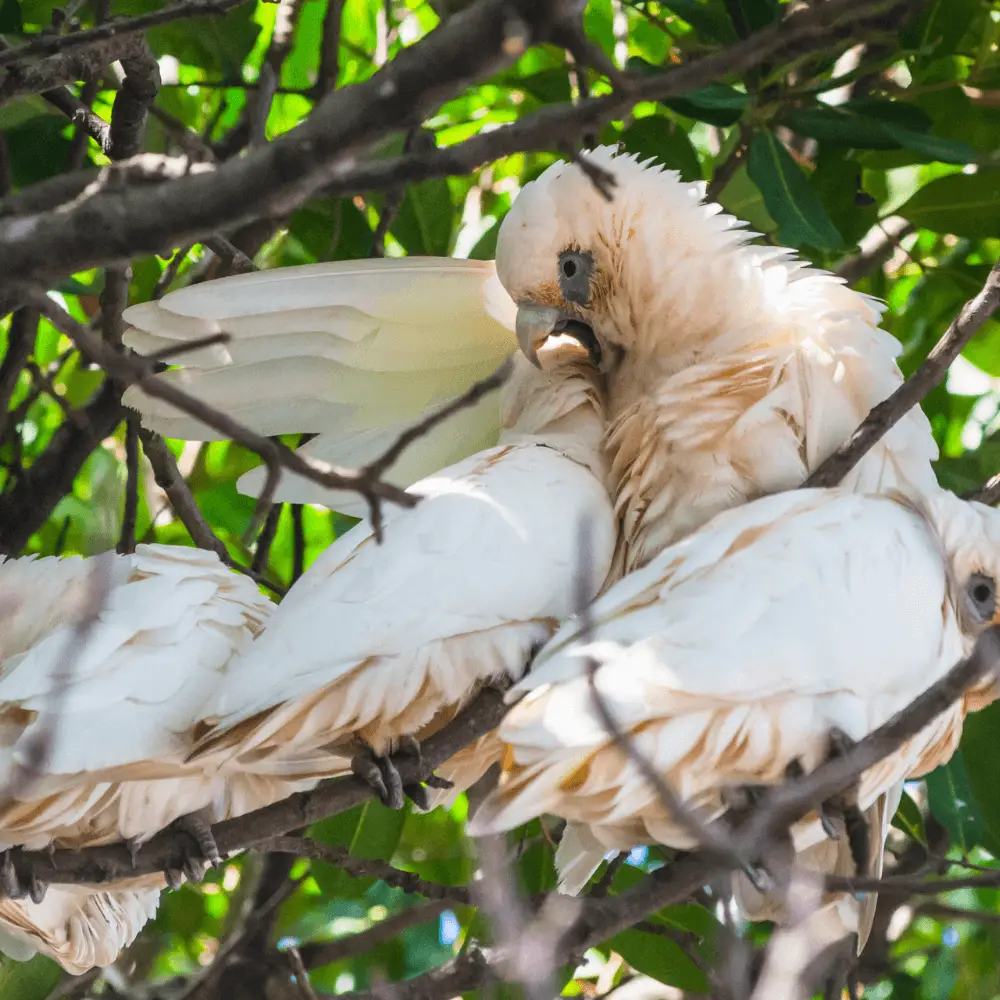
• Current IUCN Red List Category: Near Threatened.
• Demographic trend: Degressive.
In the decade of 1970, Japanese loggers ravaged the islands. Many parrots were stunned and disoriented and captured for the pet trade. Although many died of stress during transport, there is still hope after this ecological disaster, since many cockatoos have successfully bred in captive breeding programs. So there are now more specimens in captivity than in their natural habitat.
This species has a very small range, but its population is severely fragmented or restricted to certain locations. In spite of the suffering of the pressure of its capture, seems to have maintained an important population. However, habitat degradation, trapping, and continued persecution are likely to be the cause of a moderate population reduction. Therefore, it is listed as Near Threatened.
There is a conservation plan for parrots endemic to Tanimbar Islands, Indonesia, funded by LORO PARQUE FOUNDATION
Goffin’s Cockatoo in Captivity
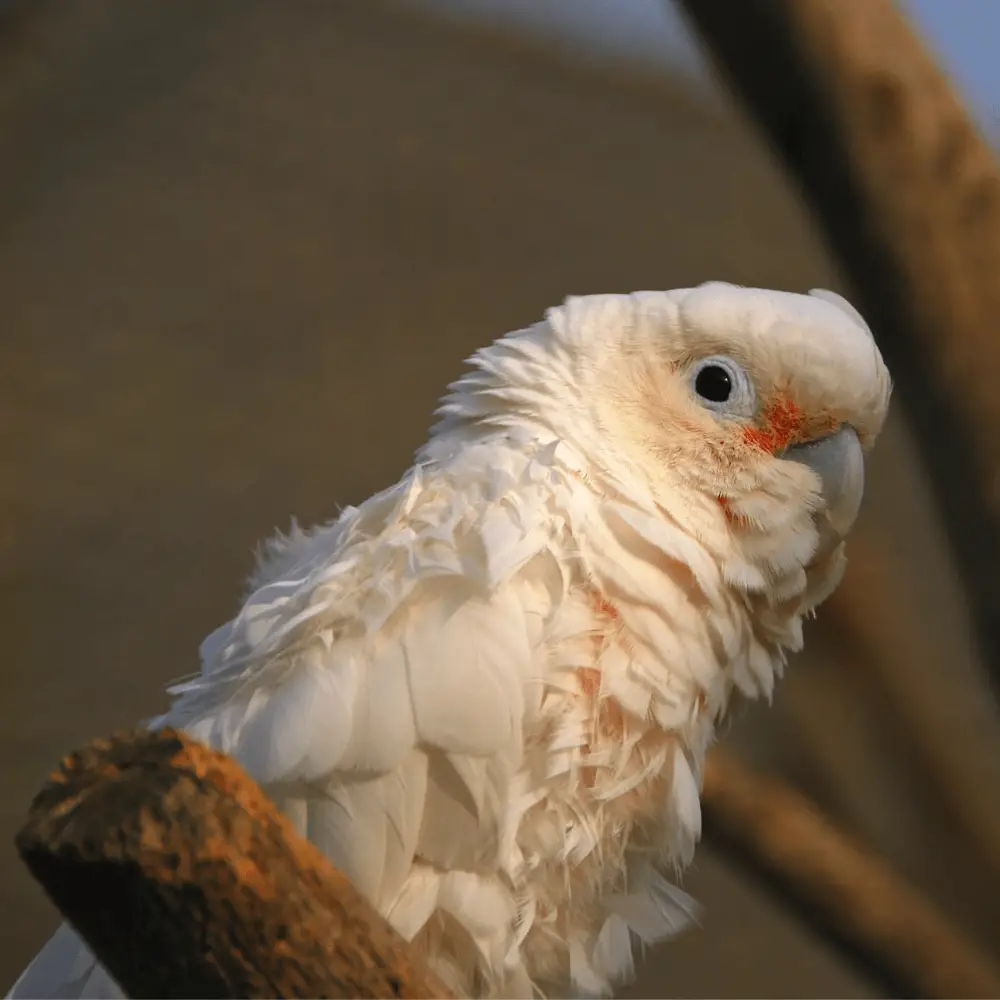
You may display a fearful start, but you quickly get used to their caregiver, becoming a very sweet cockatoo, playful, sometimes curious, and very active. Enjoying being watched, being the center of the world, like all cockatoos. Its cry is not pleasant, but this little cockatoo is quickly forgiven as its escapades and bad manners will surprise us and make us laugh.
You have the need to keep flying if you need a large space.
Goffins cockatoo personality
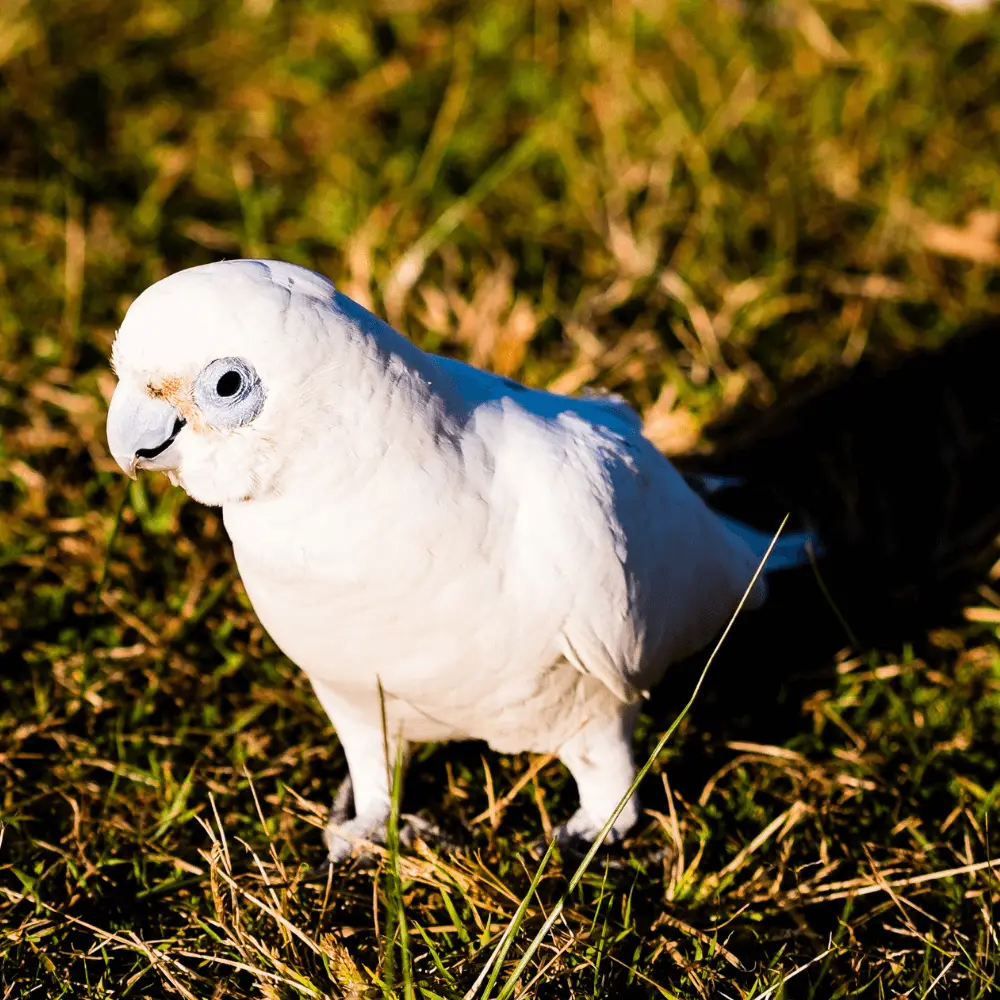
Goffin’s Cockatoo nail, without prior training, open five locks of different types:
The incredible mechanical intelligence of Cockatoo Tanimbar

